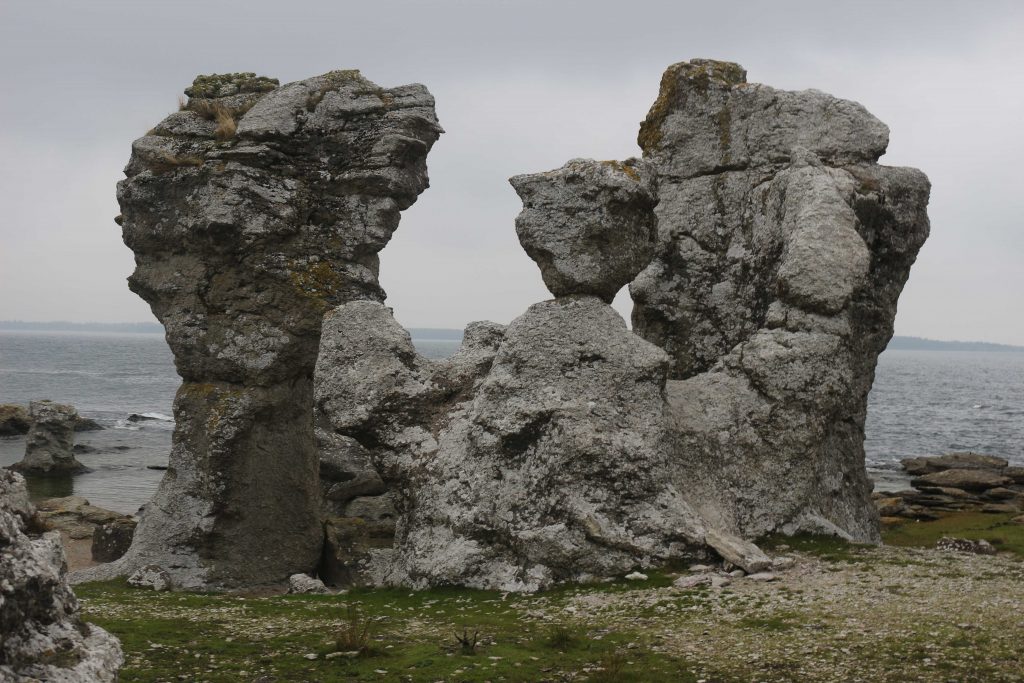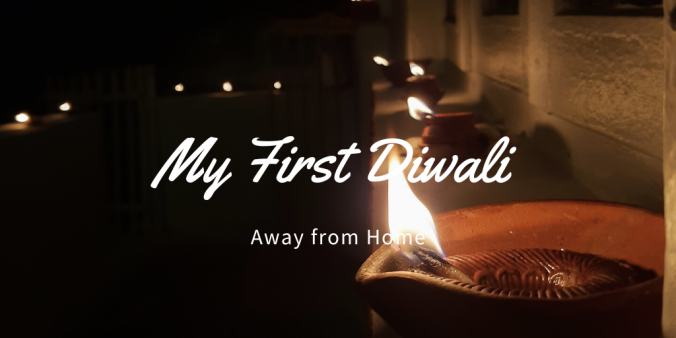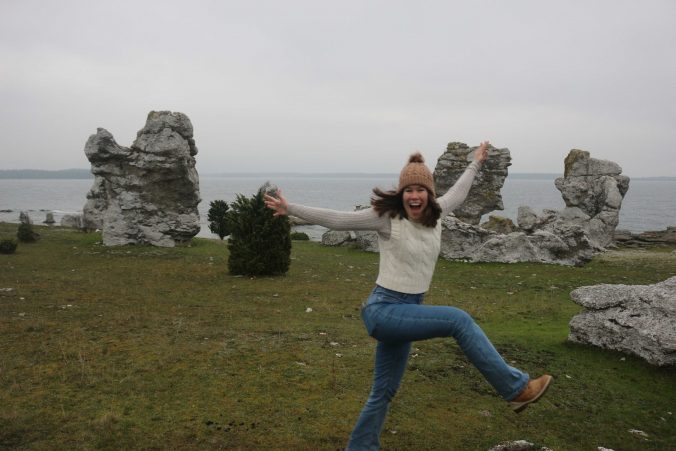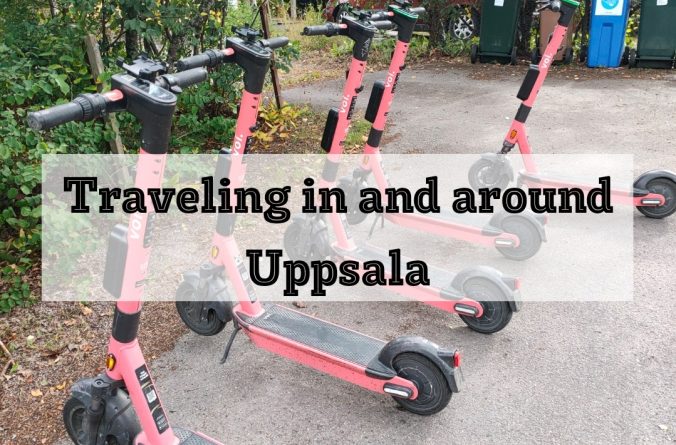Diwali is a big deal for several people in India. I never considered myself to be very religious, but spending my first Diwali (in a long, long time) away from home made me realise just how important it was to celebrate the festival with my family.
For those of you who aren’t familiar with this Hindu festival, Diwali is the festival of lights, and mythologically, it signifies the homecoming of a victor after good has won over evil. It’s a time of love and bonding, not only with your loved ones but with your community as a whole. I have memories of celebrating by bursting firecrackers with my friends as a child, and even the neighbours we never saw would come out to share a sparkler or two. Everyone’s in a good mood, dressed in their vibrant, festive best, sweets are distributed all around until you don’t remember which box of sweets is whose, and everyone’s houses are covered in strings of lights and lined with rows of diyas (little lamps made of clay with a cotton wick to light).
As I grew up, the excitement of the crackers faded, and while the festival wasn’t marked with its usual hustle-bustle, it was still a time to bond with my family over a special meal, or to help my mother roll out the wicks for the diyas. We would still dress up, if only to take a hundred photographs that my parents would then sift through to send to the extended family groups with the usual “blessings from our family to yours” message. In short, it was still a time filled with love and togetherness.
I joined Uppsala University this autumn, and faced my first Diwali away from home on Monday, the 24th of October. In the week leading up to Diwali, my Instagram feed was a myriad of people I knew having several rounds of Diwali parties, and I could feel the homesickness creeping up my throat. Without realizing it, Diwali had made its importance known, and I missed the little things I’d do if I was at home with my parents and my younger sister. I hadn’t made any particular plans for Diwali myself, even though I did have a group of Indian friends.
Eventually, the 24th of October rolled along and I found myself sitting dejectedly with a reading for my next class. My phone buzzed with pictures from my family dressed in their glowing traditional attire, and it suddenly struck me that sitting dejectedly wasn’t all I had to do. There might be several thousand kilometres between me and my family, but hopping on a video call with them would take a couple seconds at best. Two rings later, I could hear the distant sound of crackers being burnt at my apartment complex back at home, and my phone was crowded with the smiling faces of my parents.
The call didn’t last long, but it was more than enough to lift my spirits and remind me to keep the spirit of the festival alive by myself. Diwali is also a festival that calls for an intense cleaning/repairing session of your entire house, and so, as mundane as it might sound, I pulled out a round of sewing and repaired a tear I made in my clothes while getting a pantleg caught on a random nail on my bike (Uppsala things, I guess)! I folded my fresh laundry, and decided to make myself a special meal, preferably something that I had never tried making before, and it wasn’t hard to find a recipe like that since I have cooked approximately three times before coming to Sweden, and I am very basic with all my meals.
I settled on a tofu salad (very non-Indian, I am aware), and while I was cooking, I bumped into my Indian friends, who also had nothing on their plate apart from studying or working. Fortunately, we collectively decided to put everything aside for a while and spend time with each other. Sitting at the kitchen table, we shared stories of what we used to do for Diwali growing up, and it was so interesting to see how different everyone’s celebrations looked back at home.
I have this distinct memory of zooming out and looking at that moment – the three of us, laughing and talking over a shared meal in a typical common Flogsta kitchen – and feeling like that was Diwali celebration enough. To sit and spend time with people you enjoy spending time with, to share, to spread good feeling, to remember what is good and what to be grateful for, and to try and create more of those things. I mean, isn’t that what all these festivals are for anyway?
I ended up with a very strange but very memorable Diwali, and it was one that I felt genuine joy and warmth in, despite the absence of the fire-lit diyas.
I think what I’m trying to say is that, things can look so different when you’re in a different country, enveloped in a foreign culture that takes you so far from your own. But that doesn’t mean you can’t celebrate in your own little way; in a way that makes you feel the core happiness that is seated at the centre of the time you spent with your loved ones. Celebrations don’t have to look like they did back at home, they need to feel like home.
Month: October 2022
Fossils are actually a little bit responsible for how I ended up studying Energy Transition at Campus Gotland. I was still in highschool, sitting in one of my environmental science classes, sleep deprived as ever – being an International Baccalaureate student – when my teacher posed the question to our class as to whether we know where some of Sweden’s most incredible fossils can be found. Sitting there, I wanted to make an effort to actively contribute to the discussion, and my memories drifted to a time when I was much younger, on a field
trip, deep in nature, squatting as I searched for fossils… on Gotland!
My answer was, of course, correct. Across this island in the Baltic Sea, rocks that indicate global extinctions and other prehistoric events are just abundant. Remembering my short class trip to Gotland as a mere 12-year old inspired me to spend the rest of my lesson looking up university possibilities on the island – of which there was actually just one… I was amazed to realise that not only does Campus Gotland offer some exciting programmes related to the environmental sciences field I was interested in, but the campus is even part of Uppsala
University, Sweden’s first and oldest university. There and then, I knew I wanted to study here.
I’m currently in my third, and last, year of studying Energy Transition – Sustainability and Leadership. I don’t study about fossils much, I almost forgot about my fascination towards them during the period between highschool and the start of my new life on Gotland. They have a way of reappearing in my life though. During an evening walk by the seaside near the university, I glanced down at my feet and happened to notice a stunning little fossil. Besides it lay another. And another. Once I squatted down to take a closer look, I couldn’t unsee the
beautiful fossilised bounty of the seaside.
During my occasional travels around Gotland, a must-have on my agenda is finding rauks – fascinating limestone land formations created by wave erosions during the course of Gotland’s geological history. One of my favourite Gotland facts that I learned during the Visby tours, which Uppsala University offers to new students every year, is that this island’s bedrock is formed of prehistoric, fossilised coral reefs, some of which withstood the course of crashing waves over time and remained standing as isolated land formations. These are the rauks, hard limestone rocks that contain fossilised remaints of the prehistoric reefs Gotland
was formed on.
Campus Gotland is located in an environment where winding down after class in a fossil paradise, and hiking to a rauk field, is all possible. I spent all my life living in capital cities where such was unimaginable, hence sharing my new home with such rich geological pieces of history fascinates me. I feel lucky to have started my university studies in a place that’s this peaceful, stunning, and so close to unique natural formations.
Many ask where I’m heading next, in June when my studies at Campus Gotland come to an end. In 20 years, I simply hope to imagine myself being knee-deep in fossils, with the same sparkle in my eyes as the one I’ve got that first evening during my seaside walk. I return to that spot often during my time in Visby, sometimes for a mere casual walk, other times with gloves in my pocket ready to keep my hands warm in case I pause to browse through the coast’s fossils.
If you would like to experience the serene calmness of walking through a rauk field, you’re welcomed to visit some of my favourite ones around Gotland:
- Lergrav: The first ever rauk field I’ve been to. Lergravsporten, a majestic rauk arch you can walk through, catches the rays of sunset if you visit the area in the evening.
- Holmhällar: This is where I stayed during my field trip when I was 12, but the place doesn’t only feel special to me. The area is abundant in fossils and a variety of captivating rauk formations.
- Snäckschimpansen: The closest rauk to Visby, found in Snäck. It’s exciting that I can walk here any time without having to plan a trip around it. I hear this rauk is a much newer formation than the ones you usually find around the island.
- Gamla hamn: The “postcard rauk”. This is the one you will find on most photographs of Gotland. It’s all the way on Fårö, so it’s a full day trip away. I thought it was a lot taller in real life!
- Digerhuvud: Also on Fårö, it’s Sweden’s largest rauk field. I spent a sunset here, and it was unlike anything I’ve experienced in terms of nature’s magic. The endless stretch of rauks along the coast were captivating.
- Lickershamn: This is just a half-hour ride from Visby. I was here on a rainy, misty day, and got to spend some truly peaceful moments around the rauks in this area.
Thank you for reading my little blog entry about how it’s party thanks to my fascination towards fossils that I discovered Campus Gotland. If I inspired you to go fossil-hunting or visit a rauk field, remember to brush up your knowledge prior to your trip about where it’s allowed to climb rauks or take fossils home with you, and don’t forget to leave nature the same way you found it.

I’m leaving you with a peculiar fact that always makes me smile a little: on Fårö, you’re not allowed to stack stones to make rock towers – moving stones away from their place is not permitted in efforts to conserve the natural landscape and the habitats of animals that dwell amongst the rocks.
Traveling in Uppsala is very easy! There are many busses that go every 10 minutes during the day or every 30 minutes at night. To use the bus, you can download the UL app and this app is so easy to use to know when and where to grab a bus to go anywhere in and around Uppsala. You can also use the app to buy bus and train tickets, but you can also buy a bus ticket on the bus, to avoid using the app but that can be more expensive. The only downside to getting a bus is that it costs money to travel each time and sadly there is no student price, but when it’s cold, raining, or windy, or your bicycle is broken, grabbing the bus is a great option!
Instead of a bus, lots of people in Uppsala also use a bicycle. Bicycling is very easy in Uppsala and many students and people in general travel by bike in the city. There are many bike roads separate from the car roads which makes these bike paths very safe and easy to use. It is also very easy to navigate through the city and it’s also a great way to keep moving and enjoy the city from a different perspective. You can also cycle into many forests and discover Uppsala in a totally different way. Bicycling can also be faster than a bus, since you can always grab your bike and go somewhere else without having to depend on a bus schedule, and using a bicycle brings you closer to the destination you need. Just make sure to buy a good lock for your bicycle, since they can get stolen in the city.
Bicycles can easily be bought at second hand bike stores, or at bicycle sales held every so often at Flogsta and Gottsunda. Second hand bikes work well, so you do not need to buy a new bicycle for an expensive price. And if your bicycle ever needs reparations, second hand shops can also help with that for a decent price. You can also buy second hand bicycles on Facebook marketplace! Second hand bicycles are a great way to save money and recycle used bicycles.
Can’t get a bicycle and don’t want to use the bus? There are many electric scooters you can rent in the city. Apps such as Voi and Tier show you where the nearest electric scooter is, where you can activate it and rent it for as long as you want. They can be rented for a day, for a week or even a month! It’s a fast, easy and fun way to explore the city and also an easy way to include your friends if they visit you and don’t have a bicycle to travel around.
Whether it’s a bus, a bicycle or electric scooter, Uppsala is an easy city to travel around! And if you’re ever feeling active you can also easily walk around the city too. I love my bicycle, what’s your preferred method of transportation?




Recent Comments